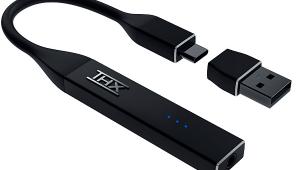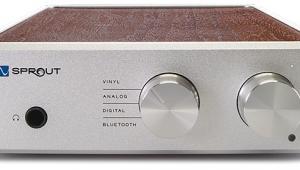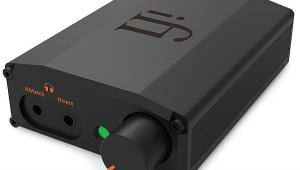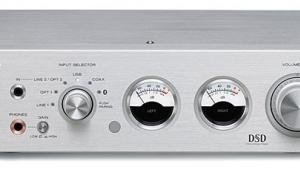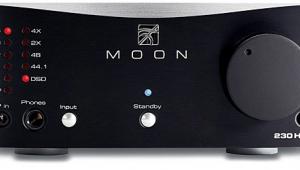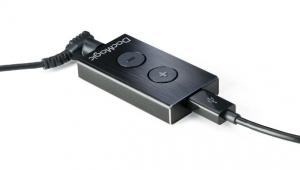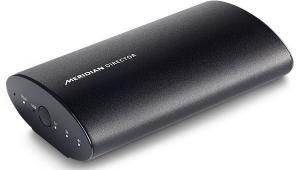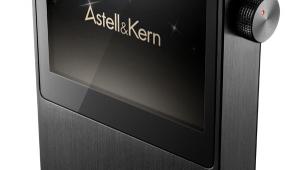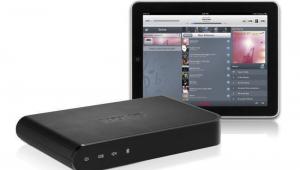Review: High Resolution Technologies microStreamer
Housed in a billet-like slab of aluminum, the HRT microStreamer’s clean, utilitarian design tips you off right away that it means business. In this case, that biz is performing the same basic tasks as the Dragonfly, including decoding files with up to 96 kHz/24-bit resolution. And at a mere 2.5 inches, it checks in for work in a similarly compact form factor.
The microStreamer connects to your computer via a supplied USB A to USB Mini-b cable. It provides two separate 3.5mm outputs jacks: one for headphones, and a second to send a line-level signal to a preamp or an outboard pair of powered speakers. The only other feature found on this simple, elegant-looking device is a row of amber-toned LEDs that indicate the resolution of the incoming audio data.
Like the DragonFly, the output level of the microStreamer’s headphone amp gets adjusted via a built-in analog volume control. You simply use the volume slider of your playback software (iTunes, etc.) to make adjustments and those commands are conveyed to the microStreamer.
Performance
With Sennheiser 598s strapped on, the microStreamer’s sound was detailed and clear, with no muddling of complex arrangements even at high volumes. Listening to “Jubilee Street,” Cave’s voice sounded gritty and full-bodied, though not harsh, and each instrumental layer each came through distinctly. “The House at Sea” displayed a similar level of detail, and the same carried over when I switched to listening with the Phiaton in-ears.
Moving my laptop to the big system, the microStreamer continued to impress. The full, fleshed-out vocals I heard in the Cave track were also in evidence when I played Mazzy Star’s “Flowers of December.” A delicate layer of reverb could clearly be heard on Hope Sandoval’s voice, and the harmonica and guitar sounded detailed without being aggressive. Even when I pushed the volume past a comfortable listening level, the microStreamer’s sound quality remained consistent.
Playing my high-rez FLAC track for this test, “Every Time We Say Goodbye,” the HRT’s delineation of instruments in real space was excellent. There was no shortage of detail, though its sound did seem a tad smoother than the Dragonfly on this track.
Bottom Line
Of the three DAC’s tested here, the microStreamer is in some ways the most compelling. Here’s why: It makes for an excellent match with both on-ear and in-ear headphones, and that same level of performance carries over to listening sessions on a big system. At around $190, it’s also the most affordable of the three, making it a solid best buy in portable hi-fi.
- Log in or register to post comments
